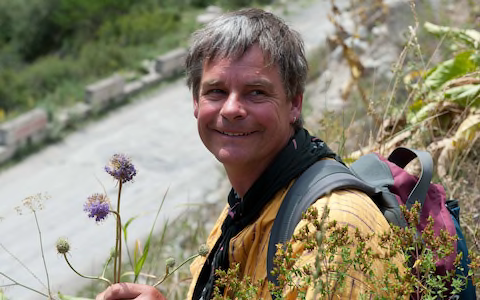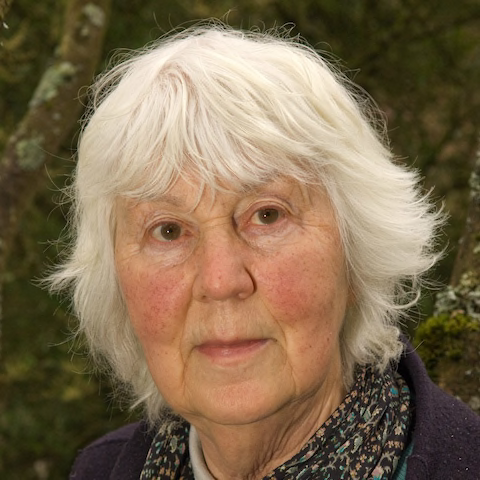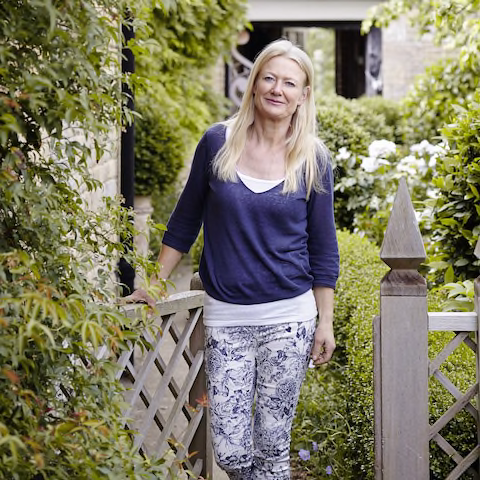
Press » The Best Gardening Books of the Year 2015

Our writers select the standout books of the year to give keen gardeners this Christmas
Tim Richardson
Not many writers would dare tackle a subject fraught with subjectivity and technical pitfalls, which is perhaps why Stephen Lacey’s RHS Companion to Scented Plants remains the only good book on the topic. This fat volume is especially welcome because much garden writing falls down when it comes to scent, with commentators describing plants simply as “highly scented”, “sweetly scented”, or even “scented”.
Tim Richardson
Not many writers would dare tackle a subject fraught with subjectivity and technical pitfalls, which is perhaps why Stephen Lacey’s RHS Companion to Scented Plants remains the only good book on the topic. This fat volume is especially welcome because much garden writing falls down when it comes to scent, with commentators describing plants simply as “highly scented”, “sweetly scented”, or even “scented”.

Tim Richardson
But as Lacey shows, “scented” is insufficient: there is so much richness and variation bound up with the fragrance of flowers and leaves, which he divides into spicy, vanilla, almond, rose, pea, fruit and honey. Lacey’s book was originally published in 1995, but this revamped version is greatly improved.
Victoria Summerley has produced two noteworthy books this year (the other is on London gardens), but of the two I prefer Secret Gardens of the Cotswolds. It’s a relief to come across a garden book that is not in a gigantic format. The content is refreshing, featuring several unfamiliar gardens among the 20 included.
Another nice innovation is the use of photographic portraits of the owners: some owners stand stiffly to attention with their dogs, while others strike a more artistic pose. Rockcliffe Manor looks like great fun, with topiary and big modern borders, and it’s good to see the glamorous Kingham Hill House, which is, alas, closed to the public.
Edward Bawden’s Kew Gardens by Peyton Skipwith and Brian Webb would make a good gift for a gardener with a quirky sense of humour. It is a reprint of a forgotten curiosity created by one of the great artist-illustrators of the Twenties and Thirties. The editors of this volume describe how they found the manuscript of Bawden’s illustrated General Guide to Kew in Bedford Museum “contained between battered cardboard covers, bound with string”.
Bawden lavished as much attention on the visitors to Kew as on the plants, and the result of this guide is surreal and humorous. The illustrations, like the one pictured right, have captions such as: “There was one crone Clorinda who would bring her dog in a bag, and let it out when she thought no one was looking.”
Noel Kingsbury
Letting plants self-seed in the garden has become increasingly popular and a big part of the new laid-back naturalistic style, so it is good to see a book on the subject, together with a list of the species that do this: Cultivating Chaos: How to Enrich Landscapes with Self-Seeding Plants by Jonas Reif and Christian Kress. Self-seeding can vary wildly between gardens – and, as many of us know, sometimes a plant can turn rapidly from spontaneous wildling to ferocious weed. The photography conveys the potential of self-seeding plants to spread and ornament our gardens.
Victoria Summerley has produced two noteworthy books this year (the other is on London gardens), but of the two I prefer Secret Gardens of the Cotswolds. It’s a relief to come across a garden book that is not in a gigantic format. The content is refreshing, featuring several unfamiliar gardens among the 20 included.
Another nice innovation is the use of photographic portraits of the owners: some owners stand stiffly to attention with their dogs, while others strike a more artistic pose. Rockcliffe Manor looks like great fun, with topiary and big modern borders, and it’s good to see the glamorous Kingham Hill House, which is, alas, closed to the public.
Edward Bawden’s Kew Gardens by Peyton Skipwith and Brian Webb would make a good gift for a gardener with a quirky sense of humour. It is a reprint of a forgotten curiosity created by one of the great artist-illustrators of the Twenties and Thirties. The editors of this volume describe how they found the manuscript of Bawden’s illustrated General Guide to Kew in Bedford Museum “contained between battered cardboard covers, bound with string”.
Bawden lavished as much attention on the visitors to Kew as on the plants, and the result of this guide is surreal and humorous. The illustrations, like the one pictured right, have captions such as: “There was one crone Clorinda who would bring her dog in a bag, and let it out when she thought no one was looking.”
Noel Kingsbury
Letting plants self-seed in the garden has become increasingly popular and a big part of the new laid-back naturalistic style, so it is good to see a book on the subject, together with a list of the species that do this: Cultivating Chaos: How to Enrich Landscapes with Self-Seeding Plants by Jonas Reif and Christian Kress. Self-seeding can vary wildly between gardens – and, as many of us know, sometimes a plant can turn rapidly from spontaneous wildling to ferocious weed. The photography conveys the potential of self-seeding plants to spread and ornament our gardens.

Noel Kingsbury
Seeing Seeds: a Journey into the World of Seedheads, Pods and Fruit by Teri Dunn Chace is a lushly illustrated invitation to explore the world of seeds. It is popular science rather than gardening, but surely anyone would be seduced by the beauty of the photography into learning a little botany. Chace’s book is perfect for dipping into.
Every now and again a book comes along that is poorly produced by an obscure publisher but which deserves so much better. Visions of Loveliness: Great Flower Breeders of the Past by Judith M Taylor reveals how nurseries and breeders turned wild plants into the colourful, free-flowering and consistent plants that fill our gardens. This is a very readable story of the unsung heroes of the nursery industry.
Mary Keen
The idea of the artist-gardener has always attracted me. This year I have enjoyed two books by artist couples, and from both there is plenty to learn. Frank and Marjorie Lawley were art students, and after they married, they lived at Wallington, where the Trevelyan family exerted a remarkable influence over those who came within their orbit. From them, the Lawleys learnt to appreciate old houses and modest, old-fashioned ways of living. Armed with the Trevelyan ethos, all their artistic energies went into garden making. Herterton House and a New Country Garden by Frank Lawley tells the story of how the Lawleys came to make their garden in Northumberland and of their life of learning about beauty and fitness for purpose.
Every now and again a book comes along that is poorly produced by an obscure publisher but which deserves so much better. Visions of Loveliness: Great Flower Breeders of the Past by Judith M Taylor reveals how nurseries and breeders turned wild plants into the colourful, free-flowering and consistent plants that fill our gardens. This is a very readable story of the unsung heroes of the nursery industry.
Mary Keen
The idea of the artist-gardener has always attracted me. This year I have enjoyed two books by artist couples, and from both there is plenty to learn. Frank and Marjorie Lawley were art students, and after they married, they lived at Wallington, where the Trevelyan family exerted a remarkable influence over those who came within their orbit. From them, the Lawleys learnt to appreciate old houses and modest, old-fashioned ways of living. Armed with the Trevelyan ethos, all their artistic energies went into garden making. Herterton House and a New Country Garden by Frank Lawley tells the story of how the Lawleys came to make their garden in Northumberland and of their life of learning about beauty and fitness for purpose.

Mary Keen
Evelyn Dunbar and Charles Mahoney were also both painters. They never married, but during their love affair in the Thirties they collaborated on a book about gardens. Published by Persephone Books, Gardeners’ Choice is a delightful find, illustrated with line drawings and word portraits of plants. The writers have an eye for the unexpected and this book makes you look at flowers with a fresh eye. The auricula has “patterned dignity” and “the gold lace polyanthus speaks rather of rich and discreet liveries, the plum and muted reds of immaculate chauffeurs and commissionaires”.
Mark Laird is a scholar rather than a painter, but his A Natural History of English Gardening is a work of art. This is a wonderful book packed with weather, animals, plants and people. I can never read enough about the early 18th-century Duchess of Beaufort who, the author writes, pulled herself out of mopishness by collecting and nurturing plants.There is a tendency to think of early gardens as static places without much life in them. In fact, those clipped hedges and the later parks and clumps of trees were buzzing with activity. All three books gave me fresh eyes to look at the familiar.
Bunny Guinness
My most-read gardening book this year is The Sceptical Gardener, a collection of Ken Thompson’s columns for the Telegraph. I have tuned into his pieces only recently, so having a collection of them to leaf through is a luxury. Thompson’s writing is based on scientific research and is an antidote to all those garden tomes based on information the authors have gleaned from other books, which are usually out of date. Although an academic, he pulls out relevant research and translates it into easy-to-absorb and amusing prose. This book could make quite a difference to the way you garden.
Mark Laird is a scholar rather than a painter, but his A Natural History of English Gardening is a work of art. This is a wonderful book packed with weather, animals, plants and people. I can never read enough about the early 18th-century Duchess of Beaufort who, the author writes, pulled herself out of mopishness by collecting and nurturing plants.There is a tendency to think of early gardens as static places without much life in them. In fact, those clipped hedges and the later parks and clumps of trees were buzzing with activity. All three books gave me fresh eyes to look at the familiar.
Bunny Guinness
My most-read gardening book this year is The Sceptical Gardener, a collection of Ken Thompson’s columns for the Telegraph. I have tuned into his pieces only recently, so having a collection of them to leaf through is a luxury. Thompson’s writing is based on scientific research and is an antidote to all those garden tomes based on information the authors have gleaned from other books, which are usually out of date. Although an academic, he pulls out relevant research and translates it into easy-to-absorb and amusing prose. This book could make quite a difference to the way you garden.

Bunny Guinness
For an inspirational read, I am enjoying Lessons From Great Gardeners by Matthew Biggs. Biggs has picked 40 icons from different areas of gardening, including Ellen Willmott after whom 'Miss Willmott’s Ghost’ is named and who spent a vast inheritance on developing three large gardens; Dan Hinkley, the contemporary plant explorer and nursery man; and Jacques Majorelle, who created his fabulous garden in Marrakesh.
I think even a non-gardener would be interested in a fair few of these people – such as Joseph Paxton, the gardener, architect and MP, and André Le Nôtre, the French landscape-architect behind the gardens of Versailles. For a gardener, the range of horticulture to which the chosen 40 have devoted their lives is broad and fascinating. Biggs has packed in a lot of fascinating information, making this an exceptionally good read.
A new book that includes many good designers and stimulating designs with a wider appeal is Garden Design: a Book of Ideas by Heidi Howcroft and Marianne Majerus. This encompasses many different styles, approaches and materials, collected together into groups such as “Trees: Scene Stealers”, and “Quiet Highlights and the Subtle Beauty of Dappled Shade”.
Every spread is heavily biased towards the photographs, which are superb, especially as they illustrate gardens from all over the world. There is also a nice balance between hard detailing and planting, as well as fresh illustrations highlighting many gardens that I had not seen before.
I think even a non-gardener would be interested in a fair few of these people – such as Joseph Paxton, the gardener, architect and MP, and André Le Nôtre, the French landscape-architect behind the gardens of Versailles. For a gardener, the range of horticulture to which the chosen 40 have devoted their lives is broad and fascinating. Biggs has packed in a lot of fascinating information, making this an exceptionally good read.
A new book that includes many good designers and stimulating designs with a wider appeal is Garden Design: a Book of Ideas by Heidi Howcroft and Marianne Majerus. This encompasses many different styles, approaches and materials, collected together into groups such as “Trees: Scene Stealers”, and “Quiet Highlights and the Subtle Beauty of Dappled Shade”.
Every spread is heavily biased towards the photographs, which are superb, especially as they illustrate gardens from all over the world. There is also a nice balance between hard detailing and planting, as well as fresh illustrations highlighting many gardens that I had not seen before.
The Telegraph, January 15, 2016

